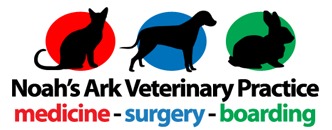Library
-
Testing for FeLV is recommended to detect underlying causes to illness, to screen apparently healthy cats who may have been exposed to the viruses, and to identify carriers of the viruses prior to introducing cats into a household of other cats. Testing protocols are discussed. Vaccination against FeLV will not affect the outcome of a cat already infected with the virus nor will it affect testing.
-
Visceral vascular tumors are tumors which arise from blood vessels. The main tumor types are hemangiosarcomas (cancerous) and hemangiomas (benign). The clinical signs vary depending on the location of the tumor. Surgery is the recommended treatment option. Given the highly metastatic nature of hemangiosarcoma, chemotherapy is also recommended.
-
Too much vitamin A can lead to poisoning. While somewhat uncommon in North America, vitamin A toxicity is sometimes diagnosed in cats that are fed primarily table scraps. There seems to be considerable variability in how susceptible individual cats are to this problem. It takes a long time for the clinical signs associated with vitamin A toxicity to develop; symptoms do not usually appear until the cat is at least middle-aged.
-
Vitamin B complex injectable is a solution containing multiple forms of Vitamin B, which are used together to prevent or treat Vitamin B deficiencies. These vitamins promote good overall health for your pet and regulate certain processes in the body. Vitamin B complex injectable comes as a solution for injection either under the skin or into the muscle.
-
Vitamin C injectable is a vitamin supplement used as an antioxidant to help treat certain toxicity syndromes or to create a more acidic urine in dogs and cats. It is also used in guinea pigs to treat scurvy. Vitamin C injectable comes as a solution for injection either under the skin or into the muscle. Injections may be given by veterinary personnel or at home by pet owners.
-
Vitamin D poisoning occurs when a cat ingests a toxic dose of vitamin D. A common source of vitamin D poisoning is when a cat accidentally ingests rodenticides containing vitamin D. The initial clinical signs of poisoning occur anywhere from 8 to 48 hours after ingestion and include depression, weakness, and appetite loss. Vomiting, increased drinking and urination, constipation, and dehydration typically follow these signs.
-
Cat Behavior Problems: Vocalization
La mayoría de las quejas relacionadas con los maullidos de los gatos suelen referirse a su intensidad y persistencia o al hecho de que maúllan durante la noche, cuando los propietarios y los vecinos intentan dormir.
-
Vomiting may be caused by disorders of the stomach, but is a clinical sign that can occur with many diseases and problems. Different types of vomiting are reviewed. Any required tests are determined based on physical examination of your cat and questions regarding how your cat has been acting and feeling at home.
-
Vomiting in Cats
Un vómito es la expulsión activa de la comida desde el estómago. Los vómitos pueden ser causados por problemas en el estómago, pero también pueden presentarse como signo clínico de muchas otras enfermedades y problemas. El vomitar no es una enfermedad específica por sí mismo. Los gatos vomitan con relativa facilidad.
-
Von Willebrand's disease causes an inability for blood to clot resulting in excessive bleeding. If this disease is suspected, initial screening tests include a complete blood count (CBC), buccal mucosal bleeding time, and a coagulation profile. More advanced diagnostics include assays that assess the quantity and functionality of vWF. DNA testing is available and most commonly used to evaluate animals used in breeding programs.

